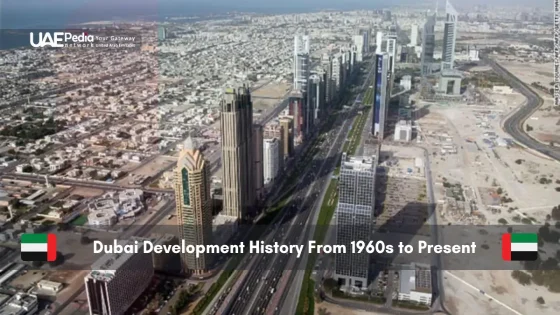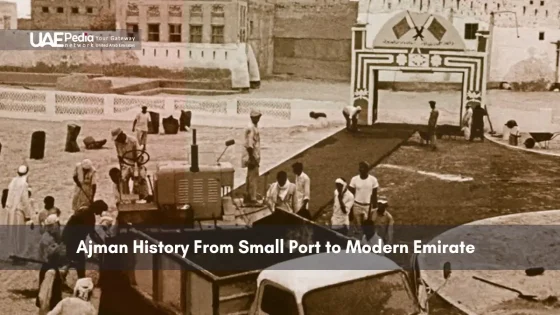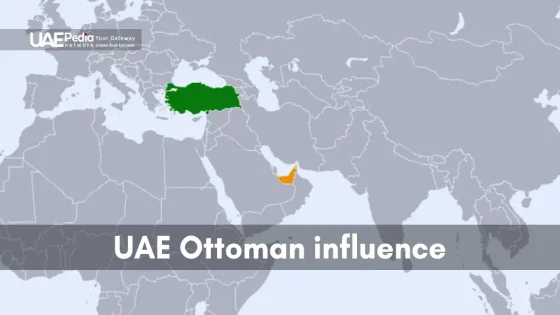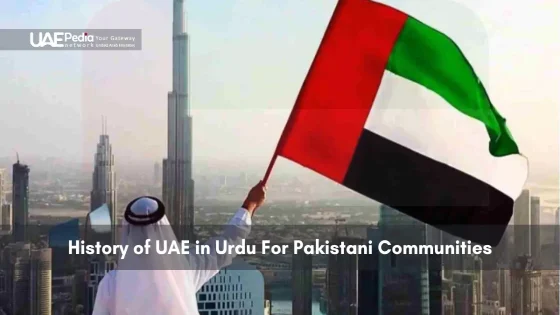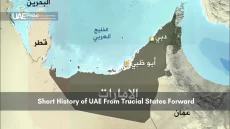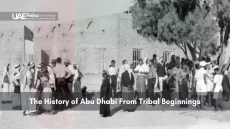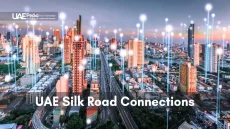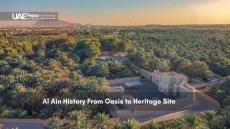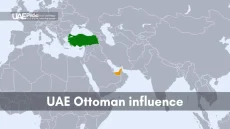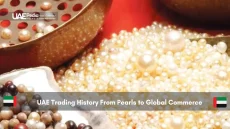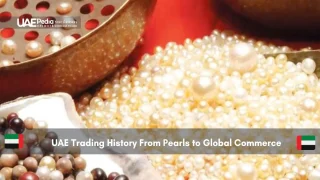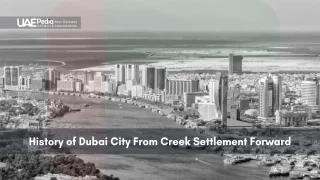In 1960, fewer than 40,000 people called this coastal hub home—today, it’s a metropolis of over 3.5 million. How did a modest pearl-diving village evolve into one of the world’s most futuristic cities? The answer lies in visionary leadership, strategic geography, and a cultural DNA that embraces both tradition and innovation.
Long before skyscrapers dotted the horizon, 12th-century cartographer Muhammad al-Idrisi documented the region’s trading potential. These early records hint at the entrepreneurial spirit that would later fuel explosive growth. By the 1970s, the discovery of oil transformed the United Arab Emirates’ trajectory, funding infrastructure that turned sand into steel and glass.
What makes this story unique? Unlike many global cities, the Emirates’ urban planning intentionally weaves heritage into modernity. Traditional wind towers stand beside AI-powered metros, while bustling souqs neighbor holographic art installations. This balance of old and new creates a living timeline you can touch, taste, and explore.
Key takeaways:
- From pearl beds to smart cities: tracing seven decades of radical transformation
- How ancient trade routes shaped today’s economic superhub
- The role of cultural preservation in rapid urbanization
Tracing Dubai’s Ancient Roots
Imagine a time when dhows—traditional wooden boats—crowded the shoreline instead of luxury yachts. Long before the glittering skyline, this coastal gem thrived as a crossroads for merchants sailing between Mesopotamia and the Indus Valley. Its natural harbor and freshwater sources made it a lifeline for traders, fishermen, and pearl divers.
Early Settlements and Maritime Trade
By the 18th century, the Bani Yas tribe had established a permanent settlement here. Their expertise in navigation turned the area into a bustling port. Ships carried dates, dried fish, and pearls to distant markets, returning with textiles and spices. As one merchant’s journal notes: “No other harbor along this coast compares for shelter or hospitality.”
Pearling and Agricultural Beginnings
Pearl diving wasn’t just an industry—it shaped daily life. Divers would plunge 30 meters on a single breath, harvesting oysters from dawn till dusk. On land, date palms and falaj irrigation systems sustained communities. These early economic activities still influence the region’s trade practices today.
What’s fascinating? The same entrepreneurial spirit that drew sailors centuries ago now fuels the Arab Emirates’ global connections. Artifacts found in the area—like Persian ceramics and Indian coins—tell stories of a place always looking outward.
The Pre-Oil Era: Foundations of a Trading Hub
Picture this: camel caravans tracing golden dunes while wooden dhows bobbed in the creek, their hulls stuffed with treasures. This was life before oil—a time when clever alliances and shrewd leadership turned harsh landscapes into thriving markets. At the heart of it all? The Bani Yas tribe, whose partnerships shaped the region’s DNA as a crossroads for ideas and goods.
The Role of the Bani Yas Tribe and Early Commerce
Leaders like Maktoum bin Butti and Bin Rashid Maktoum didn’t just negotiate deals—they built bridges between cultures. Under their guidance, the area became a safe harbor for merchants. “A fair trade,” one historical account notes, “was worth more than a chest of pearls.” These rulers prioritized trust, creating networks that stretched from Oman to India.
| Trade Goods | Sources | Routes |
|---|---|---|
| Pearls | Persian Gulf | Maritime |
| Dates | Local Oases | Overland |
| Textiles | India | Maritime |
| Spices | Southeast Asia | Maritime |
Time-tested strategies kept commerce flowing. Leaders took part in every negotiation, ensuring fair prices. When monsoons disrupted shipping, overland routes through the desert saved the day. This adaptability became the region’s superpower—long before oil wealth arrived.
What’s incredible? Many practices from that time still influence business today. The Bani Yas’ focus on relationships over quick profits created a legacy stronger than steel. Next time you stroll through a spice-scented souq, you’re walking in the footsteps of those early visionaries.
The Rise of the Al Maktoum Dynasty
Think of a puzzle where scattered pieces suddenly click into a masterpiece. That’s how leadership evolved here—tribal alliances merging under one visionary family. The Al Maktoums didn’t just rule; they rewrote the playbook for collective progress.
From Tribal Leadership to a Unified Ruler
Sheikh Mohammed bin Rashid’s ancestors faced a challenge: unite competing interests without losing cultural roots. Early leaders like Maktoum bin Butti transformed loose alliances into structured governance. One elder’s diary reveals: “We traded spears for pens, but kept our honor intact.”
Key figures shaped this era:
| Leader | Key Action | Impact |
|---|---|---|
| Sheikh Mohammed bin Rashid | Established first formal councils | Streamlined decision-making |
| Maktoum bin Hasher | Introduced trade taxation | Funded public infrastructure |
| Bin Rashid Al Maktoum | Mediated tribal disputes | Strengthened social cohesion |
This wasn’t just about power—it was partnership. Sheikh Mohammed’s predecessors prioritized water rights and fair trade laws. Their actions created trust bridges between desert camps and coastal traders.
You can still see their legacy in today’s bustling markets and efficient services. Next time you visit a government office, remember: those streamlined processes started with handshake deals under palm-frond shades.
dubai development history: Transitioning Through Time
A single oil well in 1966 sparked a transformation more rapid than the shifting dunes. This wasn’t just wealth—it was rocket fuel for ambitious visions. Leaders channeled black gold into steel and concrete, laying foundations for what would become a global crossroads.
The Impact of Oil Discovery in the 1960s
Crude’s sweet scent changed everything. By 1969, exports hit 180,000 barrels daily—enough to fund mega-projects. Sheikh Rashid’s famous decree echoed through the sands: “Build the infrastructure first, and the economy will follow.”
Strategic Infrastructure and Economic Expansion
Jebel Ali Port’s 1979 launch turned the coast into a shipping superhub. Alongside Dubai International Airport’s expansion, these projects formed economic twin engines. A 1971 report noted: “No other city builds ports before populations arrive.”
Key years reshaped the landscape:
- 1966: First commercial oil shipment sails
- 1969: Airport runway triples in length
- 1972: Deep-water channel dredging begins
Capital flowed where water once couldn’t—transforming arid land into trade highways. Each year brought bolder plans, from desalination plants to six-lane highways. This wasn’t growth; it was a metamorphosis.
Modernization Milestones in the Late 20th Century
As the 1980s dawned, architects weren’t just drawing buildings—they were sketching dreams in steel. Tax-free zones and boundary-pushing designs rewrote the rules of urban growth. A local planner once quipped: “We didn’t build for today—we built for tomorrow’s grandchildren.”
Expansion of Trade and the Free Zone Revolution
The 1985 launch of Jebel Ali Free Zone changed everything. Companies gained 100% foreign ownership—a first in the middle eastern region. By 1990, over 300 multinationals had set up shop, from tech giants to shipping titans. This wasn’t just business—it was a cultural handshake between continents.
Ambitious projects began reaching skyward. The iconic Burj Khalifa, completed decades later, had its roots in this era’s hunger for the world’s tallest titles. Early blueprints show engineers wrestling with desert winds and scorching heat—problems they’d later solve with breakthroughs in glass technology and elevator systems.
Three key shifts defined this period:
- Free zones tripling export volumes by 1999
- Architects competing to break world’s tallest records
- Cultural festivals morphing into the global village concept
By the millennium’s end, the city had cemented its role as a middle eastern crossroads. The Burj Khalifa would later crown this ambition, but its spirit lived in every duty-free warehouse and multilingual trade deal. Tourists marveled at rising towers, but savvy investors saw something deeper—a global village blueprint where East and West coauthored progress.
Rapid Growth and Iconic Projects of the 21st Century
The new millennium didn’t just bring a calendar change—it sparked an urban revolution where steel met cloud. Architects competed to touch the stratosphere while planners reimagined entire neighborhoods as cities within cities. This era turned sand into spectacle, blending ambition with Arabesque flair.
Emergence of Skyscrapers and Global Landmarks
When the sail-shaped Burj Arab opened in 1999, it wasn’t just a hotel—it became a national symbol. Its helipad tennis matches and underwater restaurants redefined luxury hospitality. By 2010, the city claimed 15% of all world’s tallest cranes, birthing wonders like the twisting Cayan Tower.
Major events amplified this momentum. Dubai’s bid for the 2022 World Cup (though ultimately hosted by Qatar) showcased stadiums with retractable roofs and solar-powered cooling—a dry run for future sporting spectacles. As one engineer noted: “We build stages where the world wants to perform.”
Investment Clusters and Urban Transformation
Neighborhoods morphed into specialized ecosystems. Dubai Marina became a nautical metropolis, while Business Bay mirrored Manhattan’s density. The history of urban planning here reveals a pattern: cluster economics drive faster innovation. Tech startups flocked to Dubai Internet City, drawn by tax breaks and fiber-optic speeds.
Three shifts defined this 21st century makeover:
- Skybridges linking megastructures into vertical communities
- Annual events like the World Cup Expo attracting 25 million visitors
- Burj Arab-inspired projects prioritizing Instagrammable design
Today, investment zones function like urban laboratories—testing ideas from drone taxis to 3D-printed mosques. The result? A city that evolves at hyper-speed while keeping one foot firmly in its trading-post roots.
Key Figures Shaping Dubai’s Transformation
Visionaries don’t just build cities—they craft destinies from desert sands. Behind every skyline-defining decision stood leaders who balanced tribal wisdom with global ambition. The Al Maktoum family’s fingerprints appear in everything from spice-scented souqs to AI-powered metros, proving leadership shapes landscapes as much as geology does.
Architects of Ambition
Sheikh Rashid bin Saeed’s mantra—“Build ports before people come”—became the region’s growth blueprint. His 1970s infrastructure spree created Jebel Ali’s deep-water harbor and expanded airports when critics called it madness. Today, 90% of the world’s population lives within an eight-hour flight—proof those runways were laying global connections, not just tarmac.
His successor, Sheikh Mohammed bin Rashid, turned economic diversity into art. By launching free zones and tourism megaprojects, he ensured oil wealth became a springboard, not a crutch. “Our grandchildren will judge us by what we build,” he declared in 2006 while unveiling the Burj Khalifa’s designs.
| Leader | Signature Policy | Lasting Impact |
|---|---|---|
| Rashid Maktoum | Port & Airport Expansion | Global Trade Hub Status |
| Sheikh Mohammed bin | Free Zone Creation | 90+ Nationalities Working Here |
The Dubai-Abu Dhabi synergy fueled this rise. While Abu Dhabi focused on energy reserves, its neighbor doubled down on trade and tourism—a tag-team strategy that made the Emirates a dual-threat economy. Shared investments in education and tech keep this partnership thriving decades later.
- Rashid Maktoum’s infrastructure bets still handle 25% of regional trade
- Mohammed bin Rashid’s innovation hubs attract 30% of Middle Eastern startups
- Joint Dubai Abu Dhabi ventures fund 40% of renewable energy projects
These leaders didn’t just erect towers—they built bridges between eras. From pearl-diving ancestors to blockchain pioneers, their policies ensure every generation contributes to an ever-unfolding story.
Cultural Evolution and Economic Diversification
Walk through a spice-scented souq where vendors hawk saffron beside digital payment kiosks—this is where centuries-old bartering meets blockchain. The city’s identity thrives on this dance between heritage and hypergrowth, creating a living lab for cultural adaptation. You’ll find grandmothers threading gold alongside TikTok influencers, both fueling an economy that’s as diverse as its population.
Weaving Heritage into Progress
Leaders here have mastered a rare alchemy: turning oil wealth into lasting cultural capital. Sheikh Mohammed’s famous words—“A nation without a past is a nation without a future”—ring through neighborhoods where restored coral houses neighbor AI-powered metro stations. This intentional blending shows in everyday life:
- Traditional majlis gatherings now host startup pitch sessions
- Luxury hotels incorporate wind-tower cooling systems into skyscraper designs
- Date palm motifs pattern the glass facades of blockchain hubs
The economy now thrives on six key pillars beyond oil—tourism, tech, aviation, real estate, finance, and renewable energy. By 2023, non-oil sectors contributed 73% of GDP, with luxury hotels and world-class events drawing 16 million annual visitors. It’s a service-based economy where Bedouin hospitality principles shape five-star guest experiences.
Global connections anchor this transformation. The city serves as a bridge between Eastern traditions and Western innovation, hosting 200+ nationalities in free zones that feel like miniature United Nations. From gold souqs to carbon-neutral smart cities, every structure tells a story of balance—proving tradition isn’t just preserved here, it’s profitably reimagined.
Historic Trade Routes, Innovation, and Global Impact
Picture merchants haggling over pearls where skyscrapers now stand—their deals echoing through time into today’s blockchain contracts. The creek that once carried wooden dhows remains the region’s liquid lifeline, whispering stories of adaptation across centuries.
From Pearling to International Commerce
Bin Butti’s 19th-century ledger reveals a truth still shaping deals: “Good partnerships outlast monsoon seasons.” Early traders along Dubai Creek perfected trust-based negotiations, laying groundwork for modern free zones. Their strategies—like diversifying cargo and sharing risks—mirror today’s global supply chains.
Abu Dhabi’s influence grew alongside its neighbor’s ambitions. While pearl fleets dwindled, Gulf commerce pivoted to oil and tech. Shared investments in ports and airports turned the Dubai-Abu Dhabi corridor into a superhighway for ideas and goods.
| Then | Now |
|---|---|
| Pearl valuation by weight | Cryptocurrency trading floors |
| Dhow navigation by stars | AI-driven logistics hubs |
| Spice routes to India | Blockchain partnerships |
Modern traders still honor ancestral wisdom. Just as bin Butti’s men timed voyages to monsoons, today’s CEOs sync launches with global markets. The creek’s tidal rhythms now power digital marketplaces—proving old currents never fade, they simply find new channels.
Reflecting on Dubai’s Ever-Evolving Journey
Time capsules aren’t just buried in sand—they’re etched into glass facades and humming metro lines. From pearl divers’ humble outposts to the international airport linking continents, this emirate’s story thrives in its ability to honor roots while chasing horizons. Those early trading dhows? They’ve evolved into supply chains spanning 190 countries, yet the same collaborative spirit fuels today’s boldest projects.
Walk through the international airport, where arrivals halls buzz with 200+ nationalities. It’s a living metaphor for the united arab ethos: connection without compromise. Mega-projects like Jebel Ali Port and the Burj Khalifa didn’t just reshape skylines—they rewrote global playbooks for urban ambition.
The united arab community’s secret? Treating tradition as a compass, not an anchor. Wind towers inspire eco-friendly cooling systems, while ancient souq haggling tactics inform modern negotiation workshops. Even today’s tech hubs mirror the creek’s historic role—spaces where ideas flow freely across cultures.
Looking ahead, the united arab vision remains clear: build platforms where the world wants to gather, create, and grow. Every steel beam and solar panel whispers lessons from the past—proof that progress isn’t about erasing history, but layering it with purpose. Ready to see what’s next? The blueprint’s already being drawn.
Before oil, pearling fueled trade and connected Dubai to global markets. Divers risked deep dives for oysters, creating a bustling industry that laid groundwork for maritime commerce—until cultured pearls and economic shifts in the 1930s changed the game.
Led by the Al Maktoum family since 1833, the Bani Yas tribe transformed Dubai Creek into a hub for fishing, trade, and diplomacy. Their alliances with merchants and focus on tax-free policies attracted talent, setting the stage for a future global city.
Post-2000s vision! Projects like Burj Khalifa and Palm Jumeirah weren’t just flexes—they rebranded Dubai as a luxury and innovation magnet. Free zones like Jebel Ali lured multinationals, while tourism campaigns turned sand into skyscraper-packed gold.
The “Father of Dubai” pushed ports over oil. He expanded the creek, built Port Rashid, and launched Dubai World Trade Centre in the 1970s—proving trade and infrastructure could diversify an economy decades before oil reserves dwindled.
Heritage sites like Al Fahidi Fort coexist with futuristic museums. Majlis culture informs business dealings, while festivals like Dubai Shopping Festival blend Bedouin storytelling with VR pop-ups—keeping Emirati identity alive amid glass towers.
Tax breaks, full foreign ownership, and streamlined permits make spots like Dubai Internet City or DMCC magnets for startups and Fortune 500s. It’s how the city shifted from oil checks to tech, finance, and green energy paychecks.
Its natural harbor linked East Africa, India, and Persia. Merchants traded spices, textiles, and gold here, creating a DNA of cross-cultural exchange that now powers the city’s airports, crypto hubs, and 24/7 cargo lanes.
